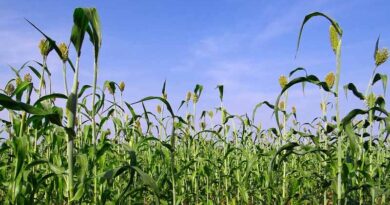
Advancing Sustainable Plant Protection in India’s Changing Agricultural Scenario
Guest Author: Harish Mehta, Senior Advisor, Crop Care Federation of India (CCFI)
29 September 2025, New Delhi: Sustainability is the keyword of the presentation backed by changes in agriculture as envisaged over the years! Sustainability, means meeting your needs now without harming the ability of future generations to meet their own needs. It’s about finding a balance between using Earth’s limited resources and protecting the environment, ensuring that these resources can last a long time and that society and the economy can thrive in the future. It means managing the resources responsibly, promoting biodiversity and generate farm profitability to improve the quality of life of the Farmer

In terms of crop protection, we would advise crops rotation, alternating crops, sequential crops to break pest cycles with limited use of pesticides.
It is also our endeavour to reduce waste, promote reuse of products by recycling and reprocessing. The result ensures increasing income or maintaining even in adverse conditions, well-being of animals, human beings, and the environment
Changing Agricultural Scenario
The other respect of changes in the Agri scenario are more prominent and can be summarised as under:
The profile of the farmer has changed, now being regarded as intelligent, hard-working, and a person to adopt newer technologies. Likewise, though the percentage of farmers involved in agriculture has reduced from 75% to 55% in over four decades we still have 14.5 crore farmer families at present. In spite of this, there has been an increase both in productivity and yield to feed the growing population. Not only has our production increased seven times in the last few decades, we have a steady surplus of food reserves with no shortages anticipated in future. There has also been a shift from cereals to horticultural crops, fruits and vegetables as users have become more health conscious after Covid
Another major shift has been an increase in animal husbandry: dairy products, poultry, bee keeping, etc.which accounts for 30% of farmers income, depending less on grains like paddy-and wheat
Agrochemicals as Game Changers
Distribution network has now deep pockets with almost 3.25 lakh authorised outlets for selling agriculture inputs in rural and semi rural areas thus ensuring that end users get quality products on PAN India basis. It is also s proven fact that Indian produce has no major issues on residues as 98% of samples tested at Govt accredated labs are within permissible limits
Simultaneously we have seen a major change in terms of promoting IPM, organic farming, zero budget natural farming, hydroponics, and Aquaponics which are being encouraged but limited to niche pockets with no commercial gain to the cultivator
Corporates are conducting stewardship programmes for safe, proper & judicious use of agrochemicals by not only engaging thousands of field assistants, but making use of video films in local languages, training in conjunction with agricultural university experts and field demonstrations to show the efficacy of the products being promoted. This change has ensured safety of the operators, contract labour with hardly any inhalation cases reported
There has been a phenomenal growth of scientists & technocrats to ensure manufacturing quality meeting international standards. It is for this reason that Agro Chemicals to the tune of ₹43,224 crore (2022-23) were exported to 167 countries globally without any rejections. However in the last few years, the surge in imports to ₹14,315 cr by MNCs and trading lobby for resale, has jeopardised the effort of Government & indigenous manufacturers to promote Make in India towards Atmanirbhar Bharat
CCFI and its members are committed to make available safe and nutritious food for the growing population by investing heavily in Research and Development and setting up Discovery Centers. It is estimated that Indian companies plough back almost 4% of their turnover in R&D for upgradation in land, buildings, laboratory equipment, sophisticated machines, conducting trials in India and abroad, utilising technocrats and scientists for product development and innovation. Several indigenous captive manufacturing plants can now produce all possible grades, which were till recently being imported as MNCs have limited investment of their own in India but depend mainly on third party tolling.
These changes in terms of manufacturing capability, world-class quality, and reach in remote areas, ensures that the farming community thrives to grow for betterment and prosperity. This also aligns well with the govt policy of ‘Make in India’.
Also Read: Coffee Board Opens Draft Sustainability Standards for Indian Coffee to Stakeholder Feedback
📢 If You’re in Agriculture, Make Sure the Right People Hear Your Story.
From product launches to strategic announcements, Global Agriculture offers unmatched visibility across international agri-business markets. Connect with us at pr@global-agriculture.com to explore editorial and advertising opportunities that reach the right audience, worldwide.






